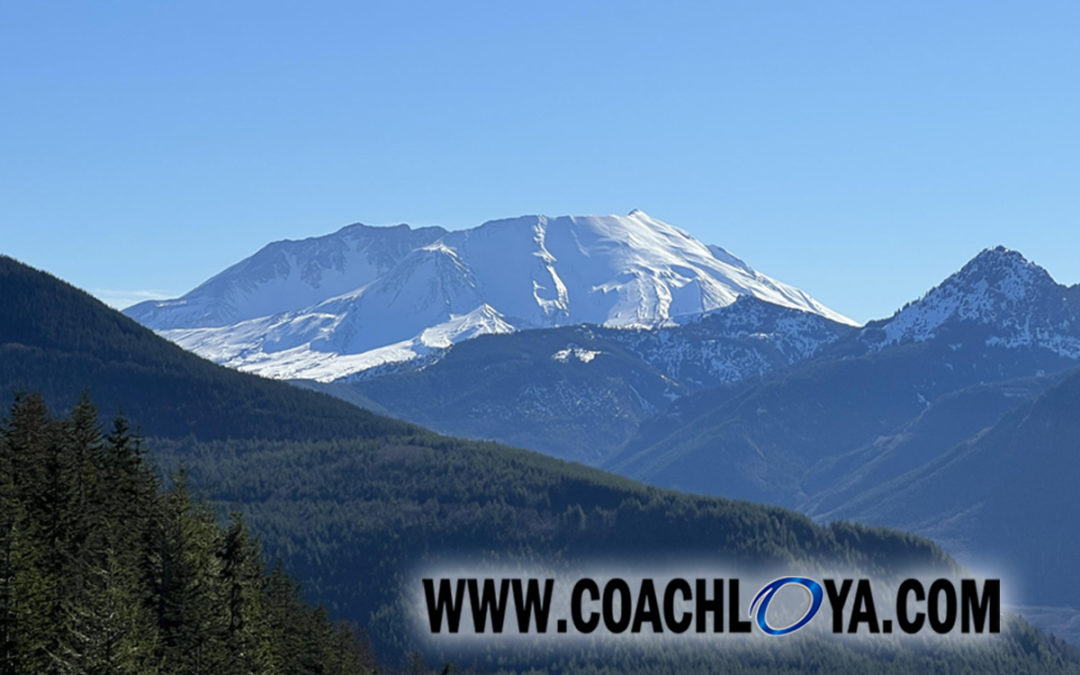I was recently in Seattle, Washington for an event and got to visit nearby Mount St. Helens. I had never seen an active volcano before and thought renting a car for the short drive there would be worthwhile.
Fifty-seven people lost their lives when Mount St. Helens erupted on the morning of May 18, 1980, making it the deadliest explosion in U.S. history. The blast created a massive crater and reduced the mountain’s height by more than a thousand feet.
Although none have matched the magnitude of the 1980 eruption, Mount St. Helens has had several smaller explosions since then and routinely experiences a variety of volcanic activity.
In full disclosure, I felt a little like Clark Griswald in the original Vacation movie when we pulled into the Mount St. Helens National Park Visitor’s Center and were greeted by a sign that read: “Sorry, the Visitor’s Center is closed until further notice.”
We walked around the outside of the building, hoping to at least snag a photo of the volcano from their exterior observatory. Unfortunately, it was too foggy that morning to do so.
Disappointed with our luck, we started heading back to our car. That’s when a park ranger emerged from the side of the building and asked us if we had any questions. Naturally, we did: Is there any way for us to get a better view of Mount St. Helens?
Ranger Adams chuckled and apologized for what she jokingly referred to as the abysmal “Pacific Northwet” weather. She asked us to wait while she went inside to check the “volcano cams.”
A few minutes later, she returned to show us a clear image of Mount St. Helens on her phone. She told us that although the road to the highest viewpoint was closed due to snow, we could still get a great view of the peak if we drove far enough to get above the clouds.
Above the clouds? How far would we have to drive to do that? We were enveloped in dreariness, so I was skeptical of conditions being any better at higher elevations.
Ranger Adams sensed my apprehension but assured me that blue skies and clear views awaited us—above the clouds. She encouragingly said, “You came this far, you’ll regret not trying to go farther.”
Moved by her words, we headed off into the foggy unknown. We drove the windy, narrow road for almost 30 miles without any improvement in visibility. I was convinced we were on a goose hunt until out of nowhere the fog vanished.
Exactly as Ranger Adams had described, we were treated to sunshine, blue skies, and a clear view of Mount Saint Helens. The sight was truly majestic.
The first thought that entered my mind: Good teammate move, Ranger Adams!
Sometimes we encounter occasions in our lives when we feel enveloped by abysmal conditions. Maybe it’s a losing streak, a derailed career path, or a toxic relationship. It is during these occasions that we need a teammate like Ranger Adams who will encourage us to get above the clouds.
Once we rise beyond the fray of pettiness, jealousy, and selfishness, life becomes an entirely different experience. Our mood changes, apathy dissipates, and we discover clarity of purpose.
We all have it within us to encourage our teammates, but we also have it within us to be receptive to our teammates’ encouragement with faithfulness. Having faith when the path to our desired “destination” is clouded by skepticism can be an equally impactful good teammate move.
I took the above photo moments after we broke through the clouds. I will forever cherish this memory, as well as Ranger Adams’ encouraging good teammate move.
Regrettably, I didn’t think to take a photo of Ranger Adams as it would have made a nice accompaniment to this story. We stopped by the Visitor’s Center to thank her on our way back down the mountain, but she was already gone.
If you happen to visit Mount Saint Helens in the near future and see Ranger Adams, be sure to convey my gratitude.
As always…Good teammates care. Good teammates share. Good teammates listen. Go be a good teammate.





